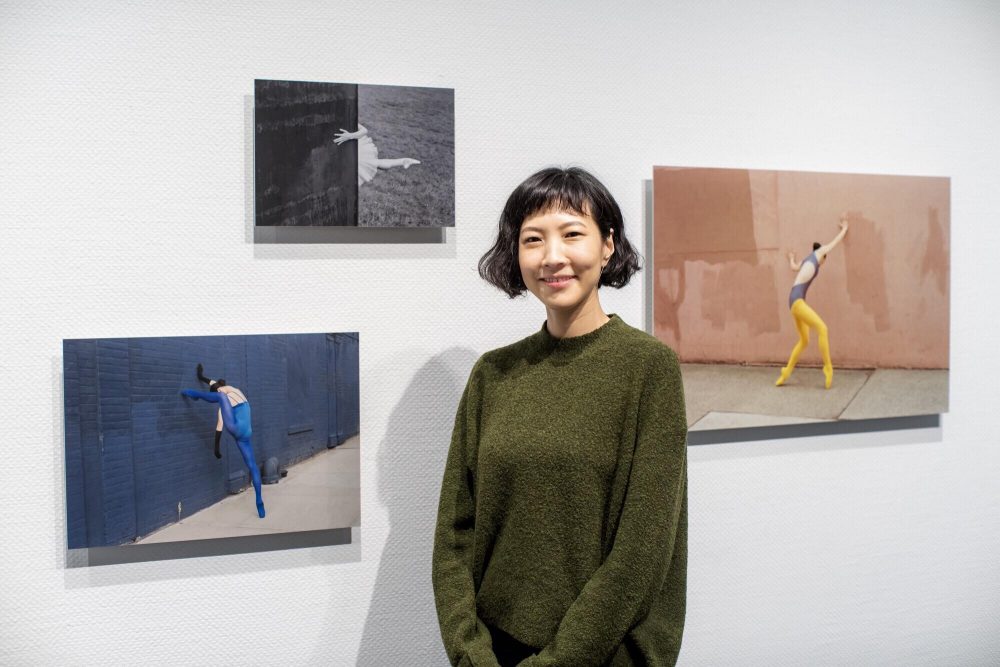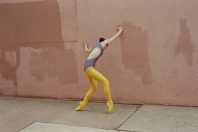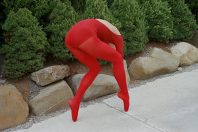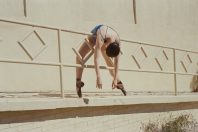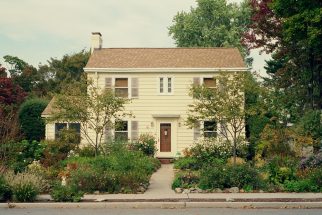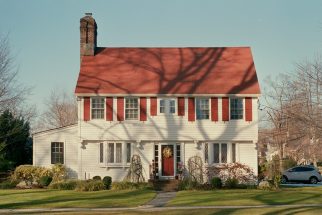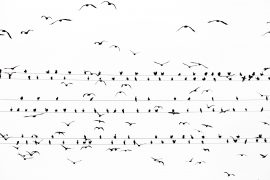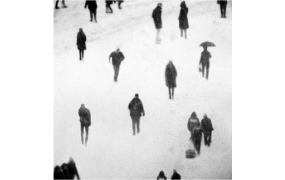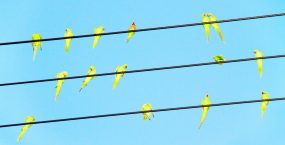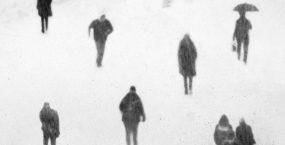Sayuri Ichida’s photo series “Mayu,” exhibited at this year’s “LUMIX MEETS BEYOND 2020 BY JAPANESE PHOTOGRAPHERS #6” explores ballerinas as the objet d’art. Inspiring her photographs was her experience as an immigrant in America; and in looking at the slightly faded tones and colorations within, one senses asoft, endearing nostalgia within her pieces. Where does her longing gaze for this foreign country come from? Ichida’s works serve to bring together her memories and experiences: lying somewhere between these two lands of Japan and America.
Interview=Eisaku Sakai
―It’s my understanding that before you came to New York, you had worked in London to become a fashion photographer.
That’s right. My photography professor in college used to work in the fashion industry, and he advised me to join a professional studio if I wanted to do fashion photography. So I did, and got a job at IINO Media Pro. While working there I realized that a career in fashion photography would require good English, so after a few years I went to the UK. Two years later I had to leave the UK because of visa issues, but I wasn’t ready to return to Japan just yet. That led me to come to New York.
Until recently, I was working as a photo retoucher at a fashion photographer’s studio. But as I got closer to the fashion world, the more I saw how grueling it was. It wasn’t at all what I had imagined, and I realized that it wasn’t the place for me. Once I realized this, I stopped taking pictures for around two years and just focused on my retouching work. Since the reason I’d left Japan was to become a fashion photographer, I was conflicted — if this wasn’t what I wanted, then should I stay? Should I go back? It was at that point that my photography professor from my college days said to me, “You’ve worked hard to get the skills you have, so why not take photos for yourself?” Photography became much more enjoyable after I took his advice — I started exclusively taking pictures of things I truly liked. As I started taking more pictures, I thought I’d try putting them together as a body of work – and that’s where we are today.
―Your current exhibit, “Mayu,” is set against the backdrop of your experiences as a Japanese immigrant living abroad. How did you conceptualize those experiences in your work?
The subject of my series “Mayu” is Mayu Oguri, a ballerina in the New York Theater Ballet. Although our modes of expression differ, we are still both artists: and our circumstances are very similar, having both immigrated here from Japan. While our struggles as “immigrants” or “women” isn’t the primary focus of this work, the culmination of our experiences and how they made us stronger does come across in the photographs. That’s why her body isn’t just an ephemeral presence, it’s also projected in a way that look likes she will rise up at any moment. While tangential to the main theme, it was easy to add elements of this by purposely not showing her face.
―The poses aren’t typical ballet poses – there’s something off about them.
I really wanted to depict her as if she was a framed work of art. Mayu originally came to me for dancer portraits, but there are other photographers – those who specialize in artistic photography – who would be better suited to take more graceful, elegant dancer photos. Instead, I considered how I could depict her in my own unique way: focusing instead on capturing her as a work of art posed within the landscape photography I usually take.
―Did you do landscape photography before moving abroad? How did you get into photography?
I was born in Fukuoka and raised in Niigata. We had to move to Fukuoka due to my father’s job — he worked at a nuclear plant. He had an SLR camera to record any incidents at the plant, which is why we had a camera at home.
I was obsessed with collecting pretty postcards of the sea and desert when I was in 8th grade, and I used to think how nice it would be to take pictures like them myself someday. That’s what got me into photography.
―Were the postcards from overseas?
They were just your typical Hawaiian sandy beaches and blue skies (laughs). It was an easy way to get interested in photography. I tried recreating similar photos of the beach and countryside when I was in high school.
―Both “Mayu” and your previous collection “Deja vu” capture places that seem quite ordinary: they seem to function as records.
Actually, that reminds me — do you remember those kid’s toys, they had different films inside you could peek into and click a button to switch to a new picture? And it had several photos inside, like of Parisian streets and beautiful beaches. I still remember them vividly — those pictures I saw when I was 3 or 4 years old are still burned into my memory, and I think my pictures have similar compositional elements.
―It’s interesting how these pictures you take are of where you’re living in America, yet they overlap with memories of your childhood.
When I take photos, it’s from the perspective of a Japanese person. So even when I’m taking pictures in America, it’s taken through that lens of my own experience. I think that’s why people have told me that it’s peculiar to look at them: even though the pictures I take are set in America, there are also parts that don’t look like America.
I’ve also been told that it’s extremely rare to see a Japanese person, especially a woman, produce photos reminiscent of American male photographers: like William Eggleston in the 60s and 70s, back when color photographs were first being made. I wasn’t looking to capture this style of photography when I was taking the pictures, so it was a new discovery for me, too.
―How interesting! And intriguing. (laughs)
I do feel a certain familiarity in America, however. It’s probably because my mother loved American pop music and movies and when I was a child – so from a young age I’d see music videos by The Supremes and “West Side Story” set in New York. Even though I’d never been here before, I had a certain nostalgia for the place. That may also be apparent in my photos, especially as New York’s cityscape is similar to Tokyo’s — not a lot has changed over the years.
―I can see why you feel like that, given the current nature of media. By the way, how many years have you lived abroad?
It’s been nine years now.
―Has anything changed over those nine years?
The theme of the exhibition in Japanese is described as- “how best to understand the world of uncertainty”– which was translated in English to “Uncertainty,” which can also mean “anxiety” and reflects a certain part of me.
Some of these themes are present in the “Mayu” pieces as well, but the longer I’ve been living abroad and the more experienced I become, the more I feel like I’m finally starting to fit in. Being in a foreign country has become my new “normal,” but I’m still Japanese at the end of the day. Now, the subject of my anxiety is the thought of someday returning to Japan having to fit back in to my own country.

LUMIX MEETS BEYOND 2020 BY JAPANESE PHOTOGRAPHERS #6 in Amsterdam (Photograph by Shinji Otani)
―It makes sense that after living in America for so long, being there would become a significant part of your identity. Do you have any other projects on the horizon?
I’m considering a portraiture project of Polish people in an area where I was living for five years — the northmost part of Brooklyn. There were so many Polish people there; but as more young people moved into the neighboring areas, the cost of rent has skyrocketed, and many shops there are going out of business. The community has been around for such a long time, even when it wasn’t very safe. I’d love to take portraits of people from that generation in a documentarian style — I want to know more about their lives and what it was like for them as immigrants. I’d like to tell their story by taking portraits and making it into beautiful art, imparting a more message-like quality to the work.
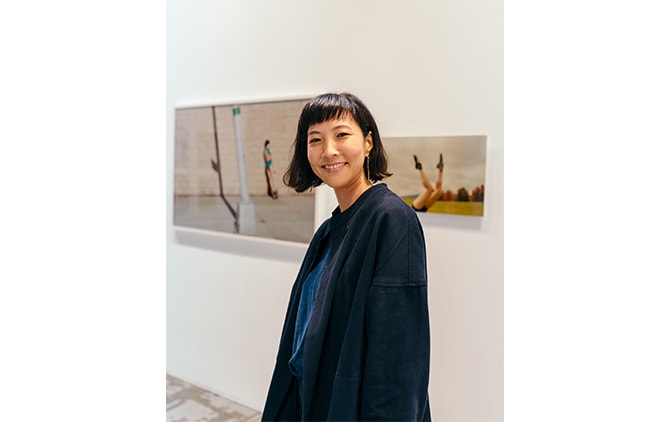
Photographs by Dustin Thierry
Sayuri Ichida
Born in Fukuoka in 1985. After graduating from Tokyo Visual Arts College in 2006, Ichida worked as a studio assistant at Iino Media Pro in Tokyo for three years. She moved to London in 2009 and then to New York in 2012. Received Japan Photo Award in 2016. This year, she was selected among the winners for the Fotofilmic 18 Shortlist Show held in Canada. Her solo exhibition was held at Space Place in Russia in September. She also participated in the 5th Biennial of Fine Art & Documentary Photography Barcelona, Spain in October.
https://www.sayuriichida.com/





